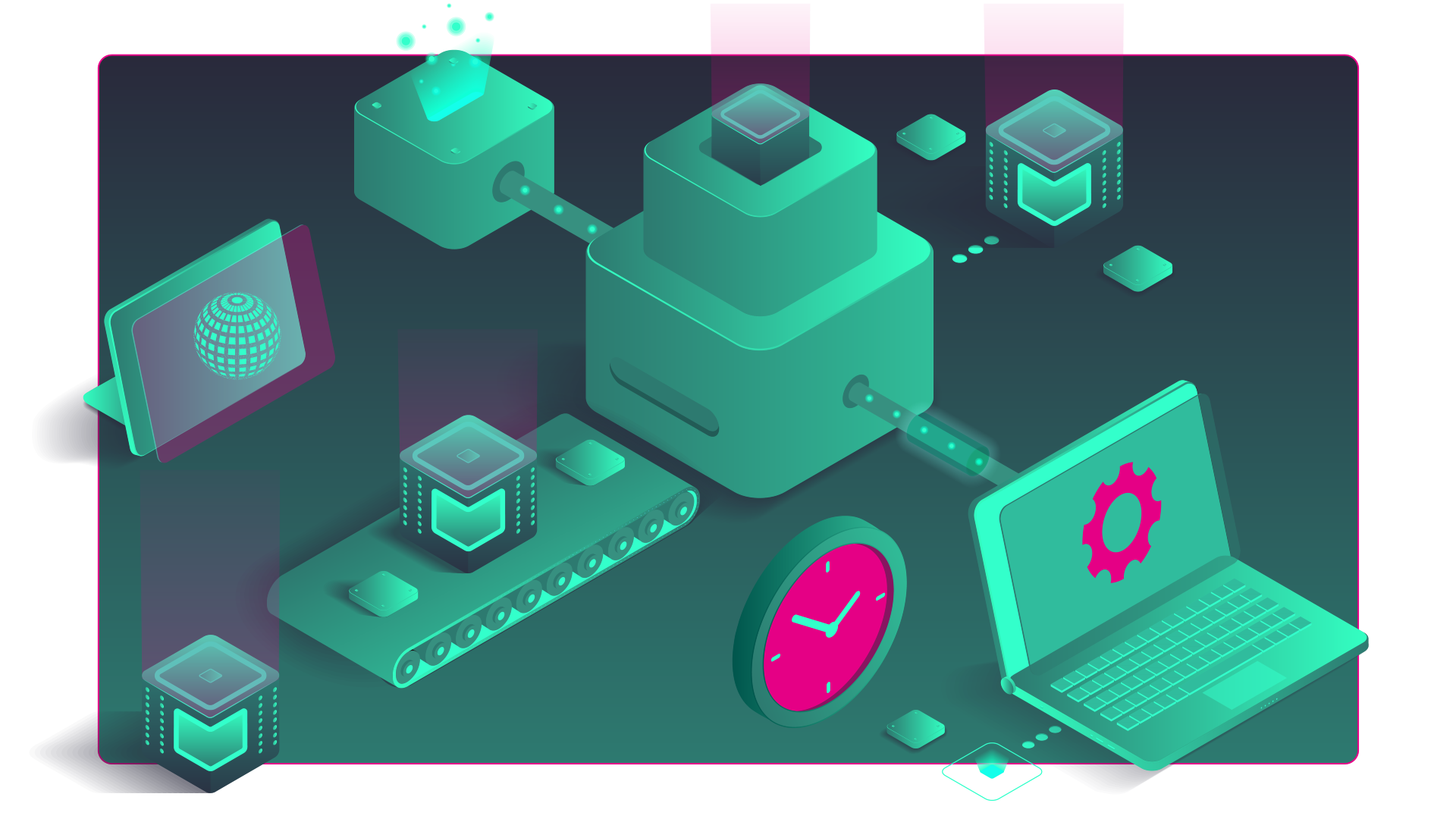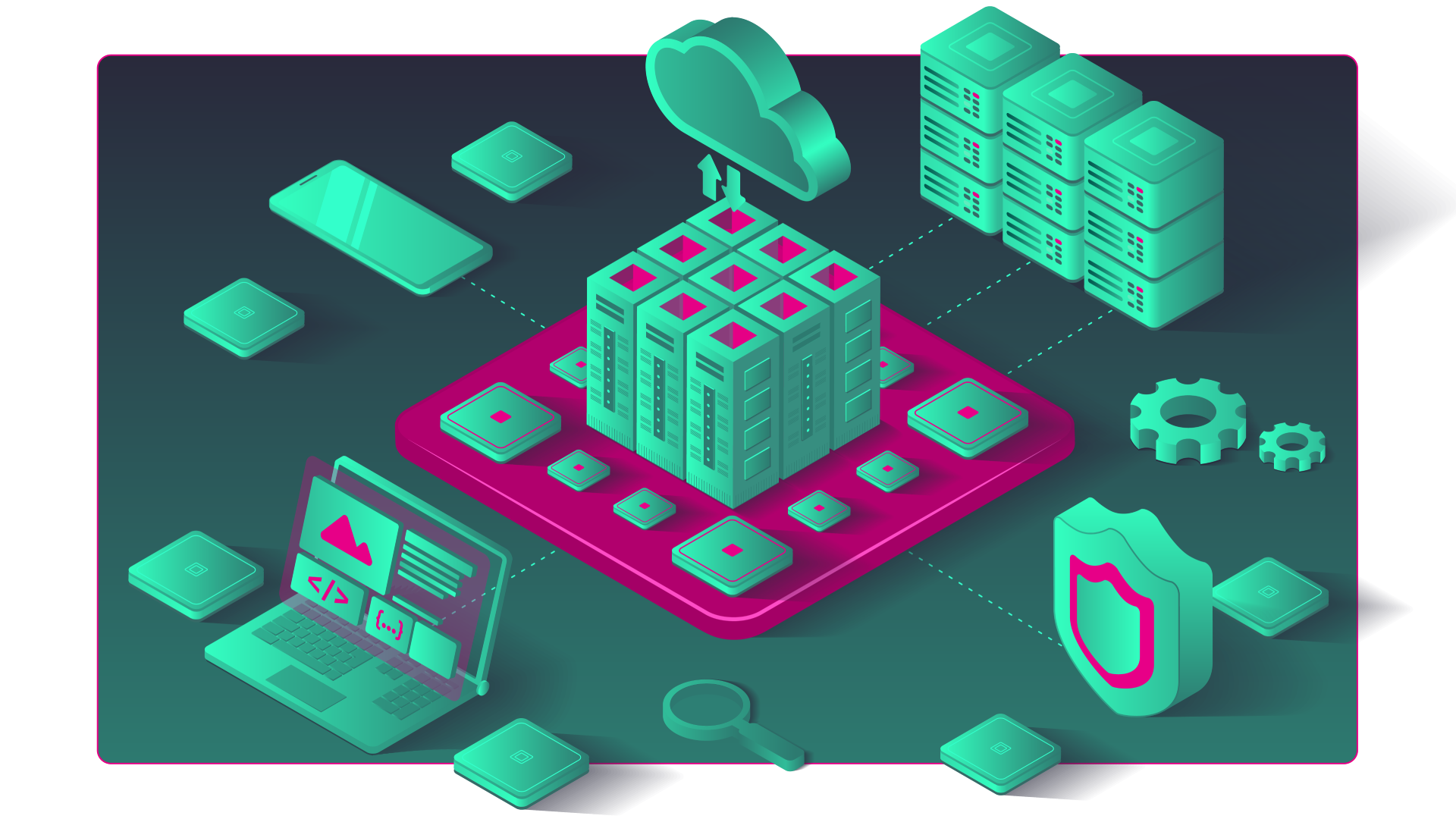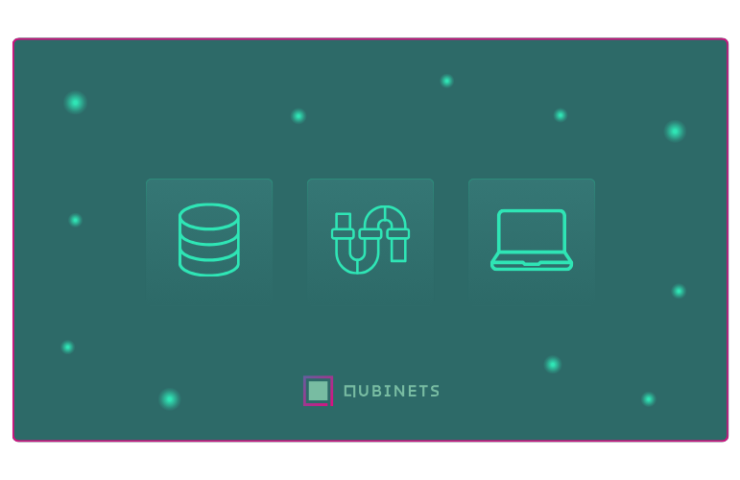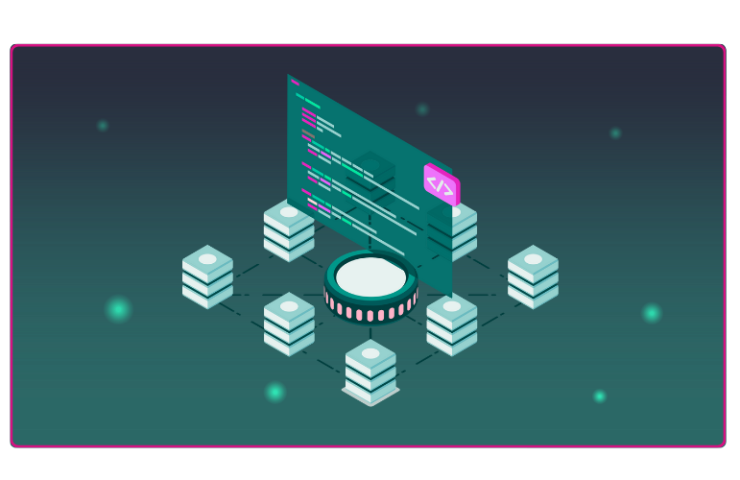AI infrastructure forms the backbone of modern AI projects, providing you with the essential hardware and software required to develop, train, and deploy AI models. This robust framework combines high-performance computing, data storage, and network resources to support the intensive workloads associated with AI data processing. As you get deeper into building your artificial intelligence product, it’s crucial to have an AI infrastructure that not only handles large volumes of data efficiently but also scales flexibly with your project’s demands.
When you start building your AI infrastructure, you must consider several key components, such as data storage management to secure and access large datasets, compute resources to power complex algorithms, and data processing frameworks to transform data into actionable insights.
Additionally, incorporating machine learning frameworks and MLOps platforms into your infrastructure can further streamline the development process, ensuring that your AI solutions are robust, reliable, and ready to meet your business’s growing needs.
Understanding AI Infrastructure Essentials
AI infrastructure combines hardware and software that supports the extensive data processing demands of AI and machine learning models. It’s critical for developing and deploying scalable solutions that can process and analyze large datasets effectively.
AI Hardware Essentials
Your AI infrastructure foundation is hardware. This includes:
- High-Performance Computing (HPC) systems are designed to tackle complex computational tasks at high speeds.
- GPUs (Graphics Processing Units) excel in handling the parallel processing requirements of machine learning algorithms.
- TPUs (Tensor Processing Units) specialize in neural network machine learning workflows.
- Neural Network Processors are optimized for artificial neural network operations.
AI Software Essentials
Meanwhile, software components are responsible for executing AI algorithms and managing data. They include:
- Machine learning libraries such as TensorFlow and PyTorch
- Data Management tools to clean, sort, and process your data before and after ML model training.
Hardware and Software Interplay
The success of your AI projects relies on the seamless integration between hardware and software. HPC systems, GPUs, and TPUs provide the raw processing power required for complex computations. In contrast, AI software serves to orchestrate these resources efficiently, therefore enabling your machine learning models to learn from data and generate insights.
Understanding the essentials of AI infrastructure and how each component interacts can help you establish a robust foundation for your AI endeavors.

Core Components of AI Data Infrastructure
The effectiveness of AI projects heavily hinges on the robustness of the AI infrastructure. Your AI system’s capability to store, manage, and process data largely determines its success.
Data Lakes and Warehousing
Data lakes are key to a scalable AI infrastructure, providing a solution capable of handling large volumes of data in various formats. Unlike more structured storage systems, data lakes allow you to store raw data, offering flexibility for later processing and analysis. On the other hand, data warehousing is critical for organizing data in a highly structured format. These repositories enable complex queries and high-speed analytics, which are essential for deriving actionable insights for AI applications.
- Data Lakes:
- Store vast amounts of raw, unfiltered data
- Offer scalability and flexibility for data types and sources
- Data Warehousing:
- Enable efficient query performance through structured data organization
- Facilitate rapid AI data analytics
Big Data Analytics and Management
The cornerstone of AI infrastructure is its reliance on big data. Effective big data analytics and management are vital for an AI infrastructure that provides the quality and quantity of data needed for AI systems to learn and improve. The use of advanced analytics on large datasets allows for the discovery of patterns and predictive insights. Furthermore, AI storage solutions must be able to not only intake but also rapidly retrieve and transform this data to feed into complex AI algorithms.
- Big Data Analytics:
- Crucial for pattern recognition and predictive modeling
- Dependent on AI data quality and thorough data transformation processes
- Data Management:
- Involves efficient handling and governance of data
- Ensures data remains accessible, secure, and consistent for AI use
In your AI infrastructure, the interplay between your AI networking capabilities and your data management systems is key to maintaining fast, secure data transfers—a necessity for high-powered AI computation. The use of GPUs and TPUs enhances AI computation by delivering the required processing power to execute complex algorithms at high speeds, fostering quicker insights and enabling more sophisticated AI-driven products and services.
Data Processing and Analysis Frameworks
When approaching AI infrastructure data processing, your choice of frameworks and tools is critical. These frameworks facilitate the cleansing and transformation of massive datasets, readying them for subsequent analysis. For big data analytics, frameworks like Apache Hadoop and Apache Spark provide robust platforms that are scalable and can handle complex data-processing tasks.
In real-time analysis, you need frameworks capable of handling continuous data streams efficiently. Apache Kafka and Apache Storm are established choices that enable you to perform AI real-time analysis, ensuring immediate insights from data as it’s produced.
For AI batch processing, where data is processed in bulk at scheduled intervals, Apache Hadoop’s MapReduce and Apache Flink offer environments that can handle extensive data processing with reliability and accuracy.
Platforms like TensorFlow and PyTorch can improve your approach to AI model training and analysis. These support complex computational graphing and automatic differentiation and are crucial for developing and training advanced machine-learning models.
Frameworks for Data Processing include:
- Apache Hadoop: Scalable, handles large volumes of data
- Apache Spark: Fast, in-memory data processing
- TensorFlow: Open-source machine learning library
- PyTorch: User-friendly, great for prototypes
For Data Analysis:
- R: Statistical computing and graphics
- Python with pandas: Data manipulation and analysis
- KNIME: GUI-based, integrates various components for machine learning
Each of these frameworks and tools has its own features and specialities. It is crucial to select the right combination tailored to your project’s needs. Your ability to process and analyze data accurately will significantly influence the success of your AI initiatives.
Operationalizing AI with MLOps
MLOps plays a crucial role in AI infrastructure, bridging the gap between machine learning model development and operational deployment to manage the AI lifecycle effectively. It integrates the principles of DevOps into AI, allowing for automated workflows that streamline AI model training, inference, and continuous learning processes.
AI Model Training and Inference
AI Model Training is the foundation of operationalizing AI, where your data is turned into actionable intelligence. Through MLOps, this stage involves training models on structured datasets, automated model tuning, and validation to ensure accuracy and reliability. Once a model is trained, AI Inference is the process of making predictions with the model on new data. MLOps facilitates scalable inference, providing the necessary compute resources to process incoming data and return predictions almost in real-time.
AI Continuous Learning Cycles
Your AI model’s ability to evolve hinges on Continuous Learning Cycles. These cycles are characterized by constant model retraining and updating, incorporating new data and feedback. MLOps not only automates this cycle but also maintains it with careful monitoring to detect model drift and performance bottlenecks. The AI Feedback Loops established through these cycles are essential to refine models, maintain relevance, and improve accuracy over time.
AI Integration and Deployment
To reap the most benefits, focus on aligning AI applications with your strategic goals. Start by choosing AI workloads complementing your existing systems to ensure a smoother transition.
Best Practices for AI Model Deployment:
- Ensure data quality: Prioritize AI data integration by curating high-quality data sources.
- Validate models: Test AI models to confirm they meet your requirements before full deployment.
When you deploy your models, remember that continuous monitoring is vital. AI infrastructure monitoring allows you to check model performance and data accuracy over time, ensuring your AI solutions remain effective and reliable.
AI Deployment Checklist:
- Prepare your AI infrastructure: Align it with the demands of the AI applications.
- Automate deployment: Use tools that automate the deployment process.
- Monitor continuously: Employ AI monitoring tools for performance tracking.
Maintenance and Updates:
Ensure regular maintenance of your AI systems to adapt to new data and changing environments. This maintenance includes fine-tuning models and updating algorithms to maintain accuracy and efficiency.
By following these strategies and best practices, you’ll be well on your way to successful AI infrastructure integration and deployment in your organization.

Ensuring AI Infrastructure Security and Compliance
Prioritizing security and compliance is a necessity when designing and implementing your AI infrastructure. By adhering to a robust framework, you safeguard against threats while ensuring the responsible use of AI technologies.
Security Measures:
- Adopt strong encryption and access controls to protect sensitive data.
- Regularly conduct vulnerability assessments and penetration testing.
Compliance Protocols:
- Stay informed about global and local AI regulations and standards.
- Ensure AI governance frameworks are in place for oversight and accountability.
- Align your AI operations with standards such as Homeland Security‘s guidelines for AI safety and security.
Data Privacy:
- Implement data anonymization techniques where applicable.
- Develop clear data retention and deletion policies consistent with privacy regulations.
AI Ethics and Accountability:
- Encourage transparent AI decision-making processes.
- Establish audit trails for AI systems to enhance accountability.
| Area | Action Items |
| AI Security | Encryption, Access Controls, Testing |
| AI Compliance | Regulation Adherence, Governance |
| AI Data Privacy | Anonymization, Data Policies |
| AI Ethics | Transparency, Decision-Making |
| AI Accountability | Audit Trails, Ethical Frameworks |
Proactively integrating these areas into your AI infrastructure not only encourages trust but also ensures a foundation that is resilient against growing cyber risks and compliant with arising legal and ethical norms.
Scaling AI: From Prototyping to Enterprise-Wide Implementation
Successfully transitioning your AI from prototyping to full-scale enterprise deployment requires careful planning and execution. Your journey involves multiple stages, each critical to ensuring the AI scales effectively.
Prototype Evaluation: Initial AI prototypes offer a foundational glimpse into potential performance. At this stage, you must assess their AI Scalability, ensuring algorithms maintain efficiency on a larger scale.
AI Optimization: Before wide-scale implementation, optimizing your AI infrastructure to handle extensive datasets and complex computations is vital. This includes tweaking models to optimize for both speed and accuracy while keeping compute costs in check.
Infrastructure Planning: Strategic AI Infrastructure Planning lays the groundwork for scaling. Invest in robust infrastructure that supports the intense demands of enterprise-level AI workloads, ensuring you have the necessary computing power, storage, and networking capabilities.
Iterative Testing and Scaling: Incrementally scale your system by testing in larger, more complex environments. Monitor AI Performance and address any issues that arise. This principle helps to mitigate risks associated with direct large-scale implementation.
AI in Production: As AI moves into production, continuity between development and operation environments is paramount. The AI Production environment should mirror the prototyping phase to prevent unexpected behaviour or performance issues.
Here is an action plan to approach this complex process:
- Evaluate your AI Prototyping for scalability and performance potential.
- Optimize algorithms to balance performance against compute resources.
- Thoroughly plan the infrastructure needed for scaling AI, considering present and future needs.
- Gradually scale your AI; test repeatedly to ensure the accuracy and efficiency of models in increasingly complex tasks.
By following these steps, you’ll set up your enterprise AI deployment for success and avoid common pitfalls associated with scaling up too quickly.
Building a Roadmap for AI Infrastructure Investment
Investing in AI infrastructure is a strategic move that requires foresight and planning. To understand the gaps, begin by assessing your current technology and aligning it with your AI business strategy. This step is crucial as it directly impacts your AI ROI and overall cost efficiency.
Cost Considerations:
- Initial investment: Understand the upfront costs.
- Long-term benefits: Project long-term savings and efficiencies.
- Maintenance: Consider the recurring costs for upkeep.
Cost Considerations:
- Align with Business Objectives:
- Identify how AI can serve your business goals.
- Prioritize AI infrastructure investments that align with strategic objectives.
- Market Trend Analysis:
- Monitor AI market trends to anticipate technological shifts.
- Adapt your strategy to stay ahead in the competitive landscape.
- Cost-Benefit Analysis:
- Evaluate potential returns against investment costs.
- Look for AI cost efficiency to streamline processes.
ROI Considerations:
- Calculate expected returns from enhanced performance and automation.
- Factor in the AI business strategy for market positioning.
Execution:
Outline implementation steps and establish metrics for success. Prioritize scalability and flexibility within your infrastructure to adapt to evolving AI technology.
Remember, thorough research and methodical planning are your allies in maximizing the AI ROI from your infrastructure investment.
Leveraging AI and Cloud Computing
When you combine the power of AI with cloud computing, you achieve greater scalability and efficiency in data processing. This fusion is reshaping how organizations manage resources and leverage intelligence.
Cloud AI Services and Platforms
Cloud computing enables you to access AI services and platforms that offer a wide range of tools for data analysis, machine learning, and cognitive services. Services such as Microsoft’s Azure have seen substantial growth by integrating AI to provide AI-driven insights, indicating the platform’s increased efficiency and innovation significant growth in Azure.
Edge computing is increasingly important as it brings computation and data storage closer to the location where it is needed. This reduces latency and bandwidth use in communications between clients and servers. By incorporating AI at the edge, you enable real-time processing and intelligence, which is pivotal for IoT devices and applications requiring immediate response AI in an AI-first cloud Paradigm.
In terms of AI Networking, cloud and AI integration leverages optimized infrastructure with robust networking capabilities to handle the vast amounts of data and complex operations involved in AI workloads. For AI Scalability, cloud infrastructure is essential. It supports scaling AI models by distributing the workload across multiple servers and accelerators, which is made possible by a high-performance network with a purpose-built cloud infrastructure.
The concept of AI Cloud Integration is to embed AI into cloud systems, enhancing the capability to design, build, and operate intricate cloud services. Techniques such as AIOps, or AI for IT Operations, help automate and enhance IT operations using AI. AIOps depends on machine learning and data science to simplify cloud management and increase operational efficiency Cloud Intelligence/AIOps.
How to Build AI Data Infrastructure with Qubinets
With a flexible approach to DevOps and DataOps practices, Qubinets integrates seamlessly with leading vector databases, affording you the capability to manage and deploy these resources on cloud platforms efficiently,
To initiate building your AI data infrastructure, follow these steps:
- Connect Data Sources:
- Link your essential data sources, including internal databases, CRMs, and APIs, to form a robust foundation for your applications.
- Utilize Qubinets’ secure blocks to integrate varied data points effortlessly.
- Indexing with Vector Databases:
- Choose a high-performance vector database, such as Weaviate or Qdrant, for indexing purposes.
- The indexed data is represented within a semantic vector space to ensure precision and relevance.
- Embeddings and Retrieval:
- Create vector embeddings to interpret your data within this semantic vector space.
- When querying, your input is also converted into an embedding. Employ cosine similarity to retrieve the most pertinent data vectors mirroring user input.
By leveraging Qubinets’ platform, not only can you build an infrastructure promptly, but you also gain access to a potent AI Vendor Ecosystem. This ecosystem simplifies the deployment and maintenance of AI applications.
Opt for Qubinets and ensure your data is cleansed, benchmarked, and ready for AI frameworks to process. As you build out your AI infrastructure with Qubinets, remember that the platform is designed to slice through complexity, enabling you to focus on driving forward your AI initiatives with confidence.






